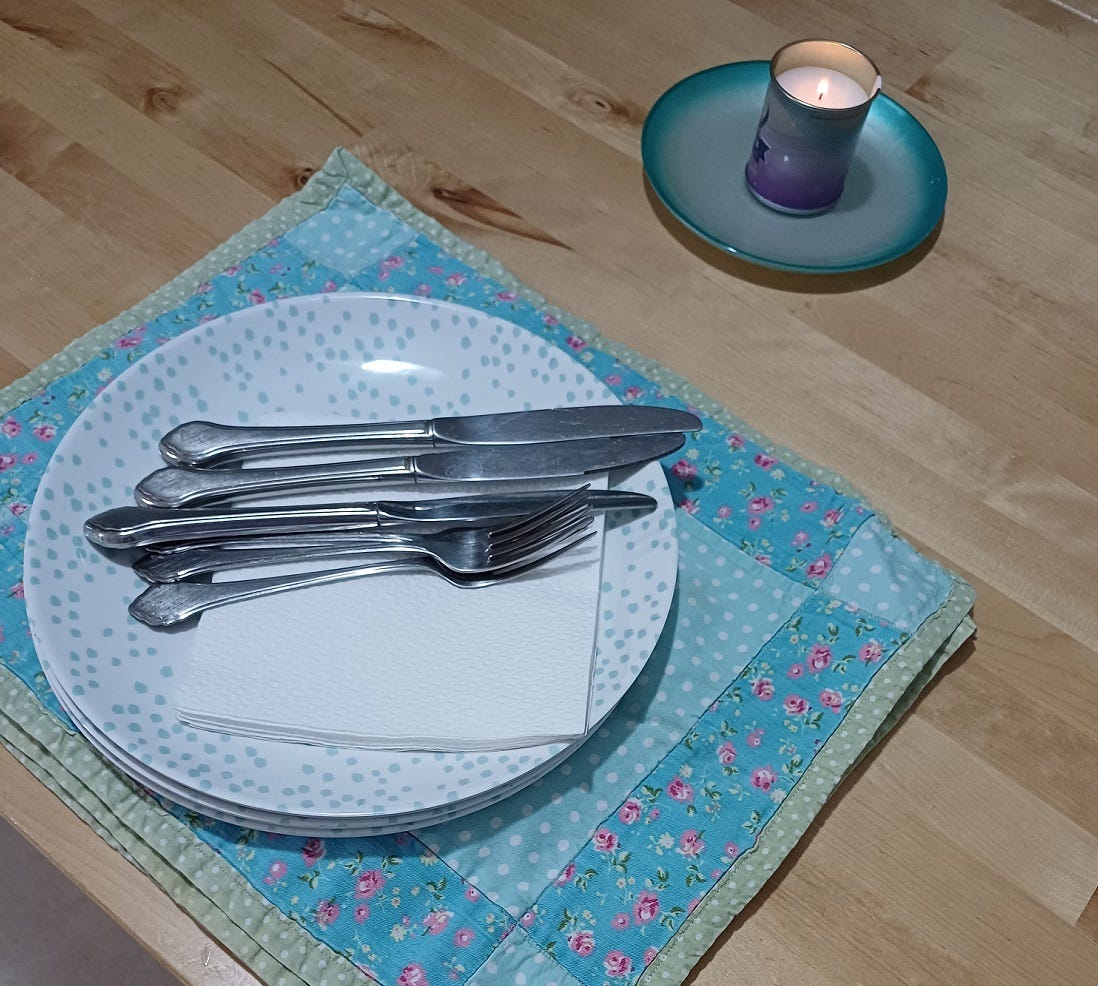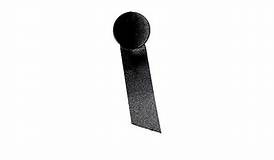“Keep away from Mr. Levine’s yard.” Mom sighed. “When he was my third grade teacher he was patient and kind, but he’s gotten very grumpy. Remember what happened when your ball squashed his flowers.”
Josh and Jennie tried staying away, but a meaty, smoky smell pulled like a magnet. They crept down his path to see what was cooking.
“Did you squash my flowers again?”
“No!” said Jennie. “And we were so quiet!”
“Even retired teachers have eyes in the backs of their heads.”
But Josh stared at the grill. “Who’s coming to your party?”
As Mr. Levine looked at the mound of grilled hotdogs and buns, his shoulders drooped. “Oh, Carole!”
Jennie looked at Josh and then at Mr. Levine. “Who’s Carole?”
“Carole was my wife. She loved a good barbecue. I guess I made enough for the family.” He blinked and sniffed hard.
“Where’s your family?” asked Josh, looking around. “If they don’t come, who will eat all this?”
“Josh!” Jennie rolled her eyes. “We’re sorry, Mr. Levine, we’ll go.”
Mr. Levine shrugged. “My kids and grandkids live far away. They’re not coming.” He tipped his head and looked at them for a moment. “But you could join me. Go ask your mother.”
They returned just as Mr. Levine plopped the last sizzling hotdog onto the platter. “Come inside.”
“Set the table while I get the food ready. Watch out for the flame.” He pointed to a candle in a small tin, then showed them the silverware and plates.
“Mr. Levine, that’s a remembering candle, right?” asked Jennie.
“Yes. It’s a yartzeit light. I lit it because five years ago today Carole died.”
“I remember when Mittens was hit by a car,” said Jennie. “We were sad a long time.”
“She was a funny cat,” said Josh. “Remember how she hid under the covers when anyone came to the house?”
Jennie giggled. “She would dash into the bedroom and disappear.”
“But you could see the lump she made under the bedspread,” said Josh.
For a moment everyone just ate.
“What was Carole like?” Jennie squeezed mustard on her hotdog.
Mr. Levine tipped his head. “Carole and I had lots of great times.” He told some stories that made everyone laugh, and the children asked questions.
“Sometimes Mittens slept on my feet,” said Josh, putting down his hotdog. “Now my feet feel empty.” He shook his head. “I bet your house felt empty, too.”
“It still does.” Mr. Levine straightened. “But you know, now it doesn’t! You are helping fill it with happy memories.”
They laughed and joked until Mr. Levine pointed at the clock. “It’s time to go, but come again.” He winked at them. “Just don’t mess up Carole’s flowers.”
“We won’t,” Josh promised. Jennie agreed. They waved at their new friend and ran home.
The End
Glossary
yartzeit, sometimes spelled yahrzeit: Yiddish (the language of the Jews in central and eastern Europe before World War II) for “year time.” The anniversary of a death. Yartzeit lights are 25-hour lights of wax or oil that are lit during the first week of someone’s passing and then on the anniversary of their death. It is a way of honoring the dead. For more information see Yahrtzeit Lights.
For Parents, Teachers, and Others
This information sheet contains a brief explanation of Jewish mourning customs. Funeral practices will be in another sheet that will accompany an upcoming non-fiction article for children ages 9-14 about traditional funeral and cemetery customs.
The Jewish world is anything but monolithic: it is composed of countless groups. In the United States, the terms Orthodox, Hasidic (Chassidic), and Ultra-Orthodox include a number of groups of Jews with different customs but who keep the traditional laws of Judaism. Conservative and Reform are the two main modern movements that put personal choice ahead of traditional Jewish law. I was raised in the Reform movement, spent a couple of my young adult years exploring Conservative, and found my spiritual home in Orthodoxy.
Mourning Practices According to Traditional Jewish Law
Traditionally, Jews never have open caskets, viewings, or before-burial wakes. Burial should occur the same day as death, or as soon after death as possible. My friend Dovi, a reserve soldier killed in the war on Hamas, was buried at 11 pm on the day of his death.
There are five stages of mourning.
The first is from time of death until after the burial. During this time family of the dead—parent, child, spouse—are not permitted to pray or carry out religious rituals, and others are not to attempt to console them. It is believed that until burial, the loss is so fresh and hard to accept that mourners should not be expected to focus properly on prayers and rituals or to be able to hear words of consolation.
During the first three days after burial, mourners do not even respond to greetings. They remain in their home. In the United States, visiting the mourners during these days is discouraged because the pain of death is too fresh. In modern Israeli society, death is not considered the mystery or secret that it is in the USA. Israel was shaped by immigrants who fled Europe due to the Inquisition or deadly pogroms (massacres); those who survived the Holocaust, for whom death was ever present; Jews from North Africa and Asia who may have experienced massacres or left elderly relatives behind; and family, friends, and neighbors of those killed in Israel by terrorists and war. The strictures on these first three days are much more lax or nonexistent in Israel.
For seven days after burial the immediate family “sits shiva.” Shiva is the Hebrew word for seven. Mourners sit in low chairs or stools. They wear a garment that has been cut ritually, today’s version of tearing one’s clothes, wear slippers instead of shoes, and forego shaving and grooming. Acquaintances come to the home to express sympathy. During this time, first-degree mourners are not expected to do anything except mourn. If there are male mourners, men usually come to the house for communal prayers at which the mourner says the kaddish prayer. If there are other family members in the home, such as a daughter-in-law, that person does the cooking, serving, and cleanup; if not, the community provides meals. On the Friday after my sister passed, my mother’s relatives came to our shiva. My community provided a complete Sabbath dinner for all twelve of us, even setting the table and heating the food that they brought.
The first 30 days after burial, including the shiva, is called sheloshim, or thirtieth. Now the mourner is encouraged to leave the house and start socializing again, although not in a full way. When one is mourning a parent the torn garment may still be worn, and males are not supposed to have haircuts. In Israel, a memorial get-together of some kind is often held on the 30th day when prayers or psalms are said and often a meal is served.
The last stage of mourning is the complete 12 months from burial. Life slowly returns to normal for the mourners, especially those who lose parents. This group of mourners are not to go to amusements and entertainments during the year.
Following the year, mourning is supposed to end. People who mourn longer than this are criticized and encouraged by others, including their rabbi, to rejoin life and put aside mourning. God meant for us to enjoy life, and those who have passed would not want us to stay mired in sadness.
The Yizkor memorial prayer is said in synagogue four times a year by those who have lost someone. Those who have not lost family are expected to leave the synagogue during this time so that their presence will not constrain the emotions of others.
On the anniversary of death people light a 24-hour candle for the departed. In Israel, relatives often get together for a meal and to share stories and remembrances of the departed.
Customs of Reform and Conservative Jews
People usually wait several days after a death for the funeral so that people living far away can attend, and so that other arrangements can be made.
Attendees at the funeral, return from the cemetery to the home of the mourners, where the mourners usually provide a buffet, often lavish. In my experience, these get-togethers sometimes into parties where friends and relatives chat with each other, there is little or no solemnity, and the mourner, possibly sitting in a quiet corner, is often ignored.
Three days of mourning are usually considered sufficient.
Instead of wearing a torn garment, people usually wear a black ribbon on their lapel.
Sources
Lamm, Maurice, The Jewish Way in Death and Mourning, New York, Jonathan David Publishers, 1969.
Years of the author’s personal experience in the USA and in Israel.




